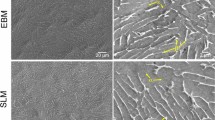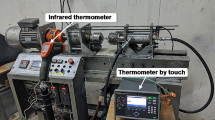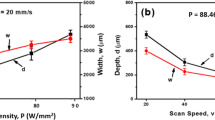Abstract
This study reports aluminum tab-to-tab laser welding for connecting components in lithium-ion batteries. In this study, laser welding was conducted using multiple spiral welding paths. The effects of the number (no.) of scan tracks, scan spacing, and laser power on welds were investigated by characterizing the morphology and the mechanical and electrical properties of the weld. The measured surface roughness of the top bead was 5.9–20.39 μm which corresponded to 1.5–5% of the thickness of the welding specimen. Many cavities of different shapes were found in the weld cross section. Most cavities were smaller than 100 μm in size. Overall, the effects of no. of scan tracks and scan spacing on the welding depth were small. However, the welding depth considerably increased with increasing laser power. It was found that on average, the welding depth was increased by 12% for an 8.1% increase in the peak power density under the same welding path condition. Tensile-shear load tended to increase as the no. of scan tracks increased due to the increase of the contact area between the upper and lower tab. Group 2 samples welded with the larger laser energy deposition per unit area, which resulted in the larger contact area, showed higher tensile-shear load (306.8–352.1 N). The hardness of the weld zone was higher than that of the base material, possibly because of grain refinement in the weld zone. The measured electrical resistance tends to decrease with a decrease in the number of scan tracks.











Similar content being viewed by others
References
Becker J, Nemeth T, Wegmann R, Sauer DU (2018) Dimensioning and optimization of hybrid Li-ion battery systems for EVs. World Electr Veh J 9:19. https://doi.org/10.3390/wevj9020019
Zubi G, Dufo-López R, Carvalho M, Pasaoglu G (2018) The lithium-ion battery: state of the art and future perspectives. Renew Sustain Energ Rev 89:292–308. https://doi.org/10.1016/j.rser.2018.03.002
Chen W, Liang J, Yang Z, Li GA (2019) A review of lithium-ion battery for electric vehicle applications and beyond. Energy Procedia 158:4363–4368. https://doi.org/10.1016/j.egypro.2019.01.783
Sadeghian A, Iqbal N (2022) A review on dissimilar laser welding of steel-copper, steel-aluminum, aluminum-copper, and steel-nickel for electric vehicle battery manufacturing. Opt Laser Technol 146:107595. https://doi.org/10.1016/j.optlastec.2021.107595
Das A, Li D, Williams D, Greenwood D (2018) Joining technologies for automotive battery systems manufacturing. World Electr Veh J 9:22. https://doi.org/10.3390/wevj9020022
Brand MJ, Schmidt PA, Zaeh MF, Jossen A (2015) Welding techniques for battery cells and resulting electrical contact resistances. J Energy Storage 1:7–14. https://doi.org/10.1016/j.est.2015.04.001
Siddiq A, Ghassemieh E (2008) Thermomechanical analyses of ultrasonic welding process using thermal and acoustic softening effects. Mech Mater 40:982–1000. https://doi.org/10.1016/j.mechmat.2008.06.004
Kim TH, Yum J, Hu SJ, Spicer JP, Abell JA (2011) Process robustness of single lap ultrasonic welding of thin, dissimilar materials. CIRP Ann 60:17–20. https://doi.org/10.1016/j.cirp.2011.03.016
Shawn Lee S, Hyung Kim T, Jackhu S, Cai WW, Abell JA, Li J (2013) Characterization of joint quality in ultrasonic welding of battery tabs. J Manuf Sci Eng 135:021004. https://doi.org/10.1115/1.4023364
Lum I, Mayer M, Zhou Y (2006) Footprint study of ultrasonic wedge-bonding with aluminum wire on copper substrate. J Electron Mater 35:433–442. https://doi.org/10.1007/BF02690530
Ji H, Li M, Wang C, Guan J, Bang HS (2007) Evolution of the bond interface during ultrasonic Al–Si wire wedge bonding process. J Mater Process Technol 182:202–206. https://doi.org/10.1016/j.jmatprotec.2006.07.033
Zhou Y, Gorman P, Tan W, Ely KJ (2000) Weldability of thin sheet metals during small-scale resistance spot welding using an alternating-current power supply. J Electr Mater 29:1090–1099. https://doi.org/10.1007/s11664-004-0270-z
Kumar N, Ramakrishnan SM, Panchapakesan K, Subramaniam D, Masters I, Dowson M, Das A (2022) In-depth evaluation of micro-resistance spot welding for connecting tab to 18,650 Li-ion cells for electric vehicle battery application. Int J Adv Manuf Technol 121:6581–6597. https://doi.org/10.1007/s00170-022-09775-z
Park M, Hirata Y (2017) Research on generation of micro-plasma arc and its power intensity. Weld Int 31:284–290. https://doi.org/10.1080/09507116.2016.1223214
Steen WM, Mazumder J (2010) Laser material processing. Springer, London
Kang SG, Shin JH (2021) The effect of laser beam intensity distribution on weld characteristics in laser welded aluminum alloy (AA5052). Opt Laser Technol 142:107239. https://doi.org/10.1016/j.optlastec.2021.107239
Lerra F, Ascari A, Fortunato A (2019) The influence of laser pulse shape and separation distance on dissimilar welding of Al and Cu films. J Manuf Process 45:331–339. https://doi.org/10.1016/j.jmapro.2019.07.015
Lu L, Han X, Li J, Hua J, Ouyang M (2013) A review on the key issues for lithium-ion battery management in electric vehicles. J Power Sources 226:272–288. https://doi.org/10.1016/j.jpowsour.2012.10.060
Liu K, Liu Y, Lin D, Pei A, Cui Y (2018) Materials for lithium-ion battery safety. Sci Adv 4:eaas820. https://doi.org/10.1126/sciadv.aas9820
Trinh LN, Lee D (2020) The characteristics of laser welding of a thin aluminum tab and steel battery case for lithium-ion battery. Metals 10:842. https://doi.org/10.3390/met10060842
ChelladuraiAsirvatham MC, Collins S, Masters I (2022) Laser wobble welding of steel to aluminium busbar joints for Li-ion battery packs. Opt Laser Technol 151:108000. https://doi.org/10.1016/j.optlastec.2022.108000
Solchenbach T, Plapper P (2013) Mechanical characteristics of laser braze-welded aluminium–copper connections. Opt Laser Technol 54:249–256. https://doi.org/10.1016/j.optlastec.2013.06.003
Zuo D, Hu S, Shen J, Xue Z (2014) Intermediate layer characterization and fracture behavior of laser-welded copper/aluminum metal joints. Mater Des 58:357–362. https://doi.org/10.1016/j.matdes.2014.02.004
Grabmann S, Kriegler J, Harst F, Günter FJ, Zaeh MF (2022) Laser welding of current collector foil stacks in battery production–mechanical properties of joints welded with a green high-power disk laser. Int J Adv Manuf Technol 118:2571–2586. https://doi.org/10.1007/s00170-021-07839-0
Kumar N, Masters I, Das A (2021) In-depth evaluation of laser-welded similar and dissimilar material tab-to-busbar electrical interconnects for electric vehicle battery pack. J Manuf Process 70:78–96. https://doi.org/10.1016/j.jmapro.2021.08.025
Tillmann W, Sievers N, Henning T, Jakimenko D (2017) FEM study of analyzing the electrical resistance of brazed joint by the 4-wire technique for quality assurance. Measurement 104:43–49. https://doi.org/10.1016/j.measurement.2017.03.015
Jarwitz M, Fetzer F, Weber R, Graf T (2018) Weld seam geometry and electrical resistance of laser-welded, aluminum-copper dissimilar joints produced with spatial beam oscillation. Metals 8:510. https://doi.org/10.3390/met8070510
Li Y, Bushby AJ, Dunstan DJ (2016) The Hall-Petch effect as a manifestation of the general size effect. Proc R Soc A 472:20150890. https://doi.org/10.1098/rspa.2015.0890
Hagenlocher C, Fetzer F, Weller D, Weber R, Graf T (2019) Explicit analytical expressions for the influence of welding parameters on the grain structure of laser beam welds in aluminium. Mater Des 174:107791. https://doi.org/10.1016/j.matdes.2019.107791
Chen Z, Kang H, Fan G, Li J, Lu Y, Jie J, Zhang Y, Li T, Jian X, Wang T (2016) Grain refinement of hypoeutectic Al-Si alloys with B. Acta Mater 120:168–178. https://doi.org/10.1016/j.actamat.2016.08.045
Funding
This work was supported by a research grant from the Kongju National University in 2022 and a National Research Foundation of Korea (NRF) grant funded by the Korean government (MSIT) (grant no. NRF-2022R1A2C1003639).
Author information
Authors and Affiliations
Contributions
Joong-Han Shin: investigation, visualization, conceptualization, supervision, methodology, writing—original draft, writing-review and editing, funding acquisition; Hyeong-Chang Noh: investigation, data curation, visualization; Go-Dong Park: investigation and methodology.
Corresponding author
Ethics declarations
Ethics approval
Not applicable.
Consent to participate
Not applicable.
Consent for publication
Not applicable.
Conflict of interest
The authors declare no competing interests.
Additional information
Publisher's note
Springer Nature remains neutral with regard to jurisdictional claims in published maps and institutional affiliations.
Rights and permissions
Springer Nature or its licensor (e.g. a society or other partner) holds exclusive rights to this article under a publishing agreement with the author(s) or other rightsholder(s); author self-archiving of the accepted manuscript version of this article is solely governed by the terms of such publishing agreement and applicable law.
About this article
Cite this article
Shin, JH., Noh, HC. & Park, GD. Effect of spiral welding path and laser power on weld in laser welding of aluminum tab for lithium-ion battery. Int J Adv Manuf Technol 126, 1317–1327 (2023). https://doi.org/10.1007/s00170-023-11225-3
Received:
Accepted:
Published:
Issue Date:
DOI: https://doi.org/10.1007/s00170-023-11225-3




